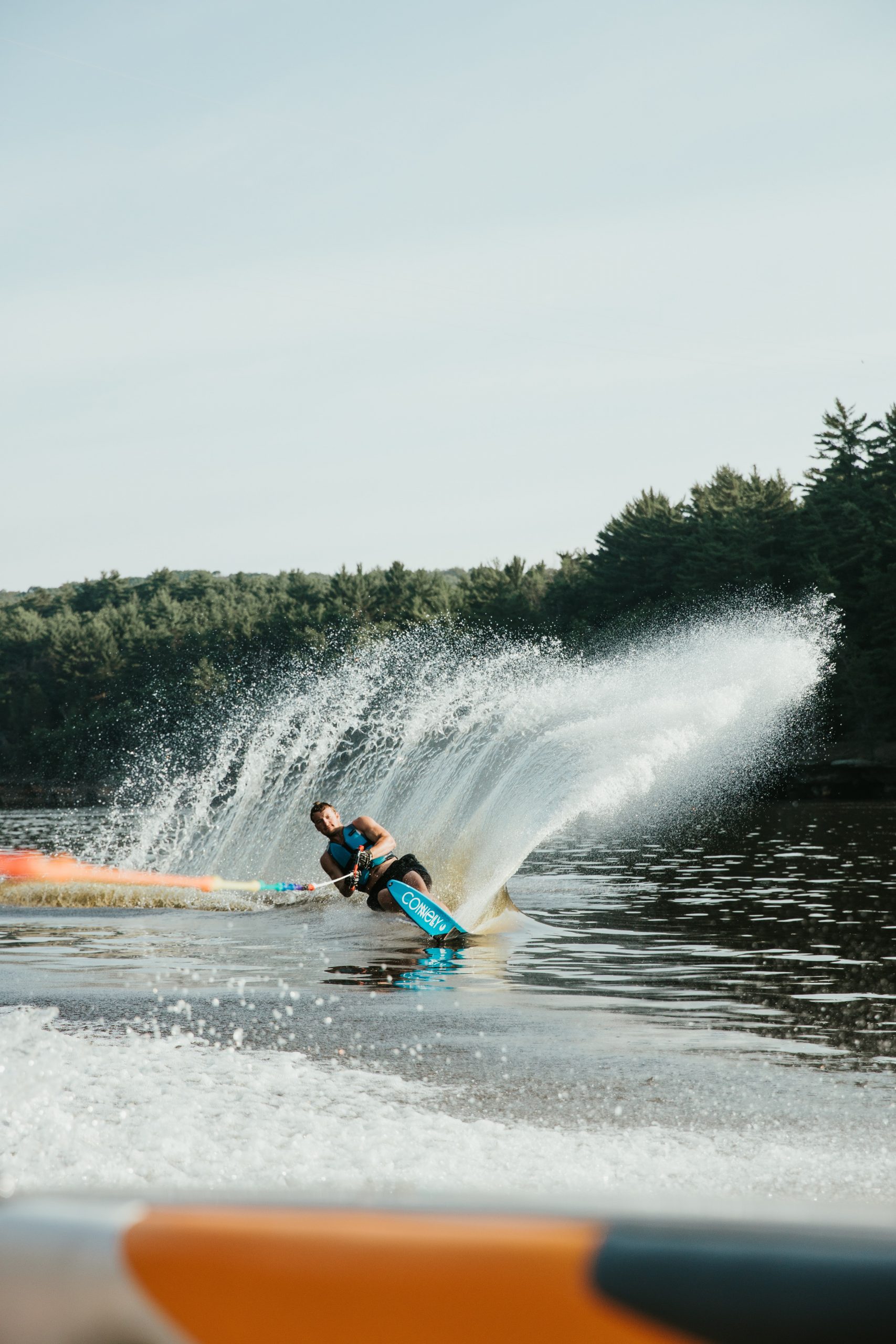
Clear Communications
The need for hand signals for communication really took hold In 1922, when a teenager named Ralph Samuelson strapped a couple of pine boards to his feet and got a boat to drag him through the water. Welcome to the inventor of water skiing. The new sport grew quickly, with roughly a third of U.S. boaters going water skiing, wake boarding, and tubing during the course of a year. If you’re new to these sports, don’t expect to perfect your first time out — but you must learn the hand signals for communications with the spotter and the driver of the boat. There aren’t many hand signals, but knowing them will make your outing go more smoothly and be more fun.
When the skier is still floating in the water, and the driver and spotter are getting ready to go, verbal communication is important. The spotter should call, “Ready?” and the skier should respond, “Hit it” or “Wait.” Never use the words “go” or “no” as they sound too much alike over the roar of the engines. The driver will have his or her eyes on the path ahead, and the spotter will have eyes on the skier. as you can see, following the hand signals for clear communications are an important part of a safe day of water sports.
Review the hand signals while everyone is still in the boat.
1. Faster: Thumb up
2. Slower: Thumb down
3. Go right, go left: Point right, point left
4. We’re turning around: Driver’s or spotter’s arm up, pointing, making circles
5. MakIing another loop: Skier’s arm up, pointing, making circles
6. I’m finished and letting go of tow rope: Skier uses a hand to simulate “slice across neck”
7. I’m OK: Skier in water, arms overhead forming a circle, fingertips touching
8. That’s just right: Skier makes the OK symbol
9. Stay behind the boat. Danger ahead: Spotter extends one arm in front of his/her body and moves it up and down
10. Get me back in the boat: Skier pats head
11. Possible injury. Boat should return to skier immediately: No movement, skier in water
Remember, always wear a life jacket.
https://www.boatus.com/expert-advice/expert-advice-archive/2018/august/life-jacket-and-pfd-basics